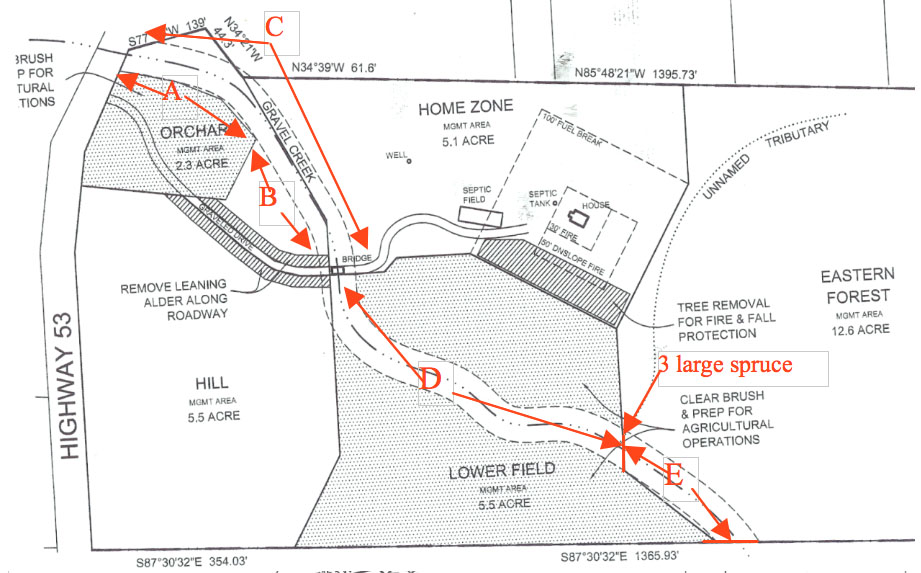A few months ago, we started discussions with the Tillamook Estuaries Partnership, a local conservation group that works to protect the watershed and salmon habitat in this area. They work in a lot of different ways, and one of them is collaborating with landowners (mostly farmers) along the waterways to do stream bank conservation projects. Tom, one of their project managers, came out to our farm to walk the stream with us.
Tom’s an interesting fellow. He has a strong biology background and is very knowledgeable about the local flora and fauna, an pointed out a lot of interesting things about Gravel Creek while he explained the goals of the TEP’s riparian improvement program. They align well with ours: we want to protect our stream habitat, increase biodiversity of native plant species, mitigate erosion, and remove invasive plants where possible. When I’d originally contacted them, I was really just looking for some technical guidance. I know SOME stuff about plant biology and habitat protection (I minored in landscape architecture in college, who knew?) but most of my experience is in the midwest…a very different bioregion. But as it turns out, TEP not only provides technical expertise, they also have programs to provide materials and labor for installation. This even a work team to remove invasives, like our ever-present Himalayan blackberries! In return, they ask that TEP be allowed maintenance access for the first few year to ensure the plantings get established. It’s far more than I had expected, and we’ll be pleased to collaborate with them. Tom is also excited about the project because of its scale… big landowners, such as 400-head dairy operations, are sometimes hard to get motivated for environmental projects, and environmentally-minded landowners are usually on smaller land parcels. We own over half a mile of creek frontage, so this would be a good project for the TEP.
 They have a wide array of plant species available, and were interested in our opinions and requirements for the project. After doing development work in the Peace Corps, I recognize this as a healthy attitude. If you don’t have enthusiastic owner buyoff, you don’t really get sustainability. Here we see the proposed plant mix for the project. They designed the species mix, all we asked was that they not use cottonwood, and we like hemlock and cedar so to go heavier on those, within the normal bounds of what was appropriate. They also adjusted the width of their work area to accommodate our planned land uses. For example, they are only working within 15 feet of the creek at the orchard area, but are working out to 50 feet the lowland areas.
They have a wide array of plant species available, and were interested in our opinions and requirements for the project. After doing development work in the Peace Corps, I recognize this as a healthy attitude. If you don’t have enthusiastic owner buyoff, you don’t really get sustainability. Here we see the proposed plant mix for the project. They designed the species mix, all we asked was that they not use cottonwood, and we like hemlock and cedar so to go heavier on those, within the normal bounds of what was appropriate. They also adjusted the width of their work area to accommodate our planned land uses. For example, they are only working within 15 feet of the creek at the orchard area, but are working out to 50 feet the lowland areas.
We’re very excited about this project, and depending on funding, it may even happen this winter. Fingers crossed.


